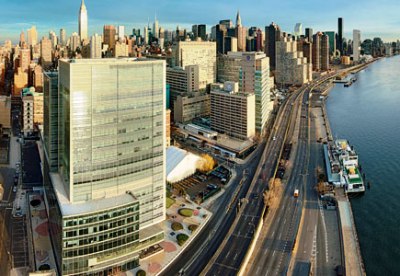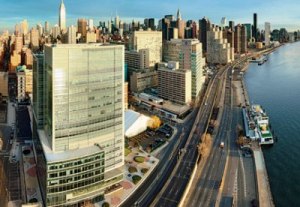New York Emerges as Biotech Hub but Hurdles Remain
By Gus Delaporte June 12, 2013 8:00 am
reprints
With the highest concentration of research facilities in the country, New York has quietly emerged as a challenger to the established biotechnology and pharmaceutical hubs of Boston and San Francisco, according to a New York City Life Sciences report provided to The Commercial Observer by CBRE.
Despite the growing presence of biotech and pharmaceutical companies in New York, the city still faces a challenge of providing adequate space to accommodate the increasing level of interest.

“The universities are here and great research is being done here,” John Isaacs, executive vice president at CBRE, told The Commercial Observer. “It is very logical for there to be spinoffs [of that research,] we just need the space to accommodate them so they don’t leave.”
A number of large pharmaceutical companies are downsizing from larger corporate campuses in New Jersey and elsewhere and relocating to New York, where there is a large research presence.
One site that has been popular with larger companies is the Alexandria Center for Life Science, a facility located on East 29th Street at the East River Science Park, which is planned to sprawl 1.1 million square feet. The development’s first tower, which was built in 2010, totals 310,000 square feet, with an additional 410,000 square feet under construction in tower two.
The flood of larger tenants to Alexandria is much like the technology industry’s recent rush to New York. Tenants at Alexandria include Lilly Oncology, a subsidiary of Eli Lilly, the NYU Langone Medical Center and Pfizer Centers for Therapeutic Innovation.
“It is similar to the ‘Google effect’ with tech,” said Matt Maison, manager of research and analytics at CBRE. “These companies want to be next to each other, like you’ve seen at Alexandria.”
Alexandria represents a portion of the city’s estimated 1.7 million square feet of existing research space. An additional 1.1 million square feet is currently under development, but the pipeline still trails the amount necessary to make New York a hub for the life sciences industry, according to analysts.
“More space needs to be developed,” Mr. Maison noted. “The demand is here but [the companies] are leaving.”
One of the largest obstacles is cost. The cost of developing office space, let alone lab space, in New York City can be prohibitive, much more so than in Boston and San Francisco.
“Building lab space is even more expensive because of the infrastructure required,” Mr. Isaacs said. “The conundrum is either developing [new space] or retrofitting [existing space] in order to accommodate less-expensive biotech space.”
The cost of constructing lab space can vary, from $300 to $600 per square foot, excluding the cost of equipment and design, according to the CBRE report. Building out traditional office space normally costs between $50 and $150 per square foot.
“The numbers don’t really work unless there is some type of incentive,” Mr. Isaacs noted of the cost.
New York City does provide a number of incentives for biotech companies, including the Biotechnology Tax Credit which awards approximately $2 million in credits each year. The credit of $250,000, which can be claimed for three consecutive years, is available to companies with fewer than 100 employees—75 percent of whom must work in New York—and meet financial limitations.
Additionally, the Fund for New York City and the New York City Economic Development Corporation Investment Fund awards up to $250,000 in grant funding for companies “whose work has proven potential, but has not reached the point of commercialization.”
“The academic community and the EDC are trying to help,” Mr. Maison said. “The fertile ground is here to grow even faster.”
Further, venture funds are noticing the opportunity in New York, where the market has experienced a 25 percent year-over-year increase in venture capital funding to biotechnology companies—$262 million in 2012, up from $209 million in 2011 and $177 million in 2010.
“San Francisco and Boston have seen a decrease in venture capital; New York has seen an increase,” Mr. Maison noted, conceding it was difficult to determine if funding was transitioning away from the Bay Area and Boston toward New York.
Despite the barriers to entry, it benefits the life sciences industry to be in New York.
“Developing drugs is extremely important, there is a tremendous amount of money and tremendous amount of time involved,” Mr. Isaacs said. “Pharmaceuticals are searching for a drug pipeline, they are investing in research and coming to where research is, no other place is as concentrated as New York.”



